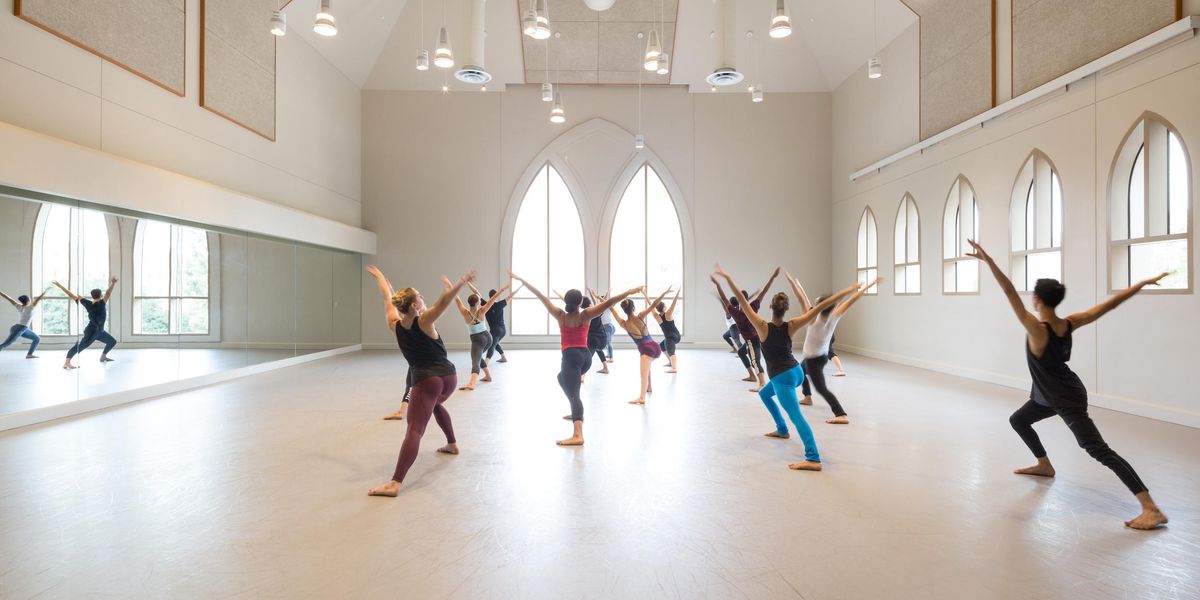Quick Q&A: Anne Teresa De Keersmaeker
En Atendant and Cesena. New York gets its first look at these companion pieces—stark explorations of darkness and light, rooted in music of 14th-century France—Oct. 19–20 at the Brooklyn Academy of Music. After a recent rehearsal with Rosas, her illustrious Brussels-based company, De Keersmaeker spoke by phone with Dance Magazine contributing writer Siobhan Burke.
Originally these works were performed outdoors—one at dusk, one at dawn. Did bringing them into the theater change them for you?
Well, it is true that they premiered at the Festival d’Avignon as a diptych—En Atendant at sunset, Cesena at sunrise. From the beginning I collaborated with the visual artists Ann Veronica Janssens and Michel François. We wanted to go from light into darkness and darkness into light. Avignon was a unique occasion to do that.
For indoor spaces, we transformed the opening and closing of the light in a very simple way. The pieces gain in dramatic intensity indoors, though they maybe lose a certain notion of poetic force. But it would be wrong to say that you lose the essence of the pieces. In fact, they are done indoors much more frequently than outdoors.
In the theater, do you try to emulate the rising and setting sun?
I don’t think you should compete with the sun. So that was not the point. The solutions are extremely modest and efficient—absolutely low-tech. These are also pieces that challenge your perception of what becomes visible in the darkness and what disappears in the light. The music is linked to music of the late 14th century, a style named ars subtilior. Of course the Middle Ages are often wrongly described as the Dark Ages. It was a very chaotic era, but out of this chaotic situation came the beginnings of the Renaissance.
So in this music from the so-called Dark Ages, were you able to find something bright?
The music for me was like coming home. It brought together all different aspects of what I search for: a complex and refined structure, both melodically and rhythmically, and at the same time, in a very natural and articulated way, a high degree of emotional intensity.
Rosas in
En Atendant at the Festival d’Avignon
Photo by Herman Sorgeloos, Courtesy Rosas
But it was challenging, too?
It was really challenging to find a choreographic answer to the music, to bring to the surface what is so contemporary about it.
How do dancing and singing inform each other in these works?
The relationship between dance and music has been over 30 years my main focus, and I think in this diptych, it is in its most purified form. In Cesena, the dancers also sing, and the singers also dance. There are no instruments—only the human body with the human voice. I’ve never gotten so close to music. In En Atendant, music and dance are more separate; there are still instruments, like the flute and vielle, a kind of medieval violin.
Cesena
is very much about the collaboration with Björn Schmelzer and the singers of Graindelavoix, which is historically based but non-orthodox in how the voice is approached. They approach the voice similar to how I approach movement: aiming to detect the universal laws of movement, the mechanics of movement, how the body functions, but at the same time very individually anchored, not trying to polish things.
How do the dancers of Rosas train on a daily basis?
People have their individual training—contemporary dance techniques or other practices such as Alexander technique, yoga, tai chi. I think with the kind of vocabulary I’m working with, the work is the performance and the performance is the work. People train through the making of these pieces. They are very long, intensive, slow physical and social processes. The dancers are very much involved in the genesis. So I think that’s their main training. And we do a lot of yoga.
Your work is so mathematically complex. Can you trace your interest in geometry to any particular starting point?
I’ve had a strong interest in Pythagoras from the very beginning, when I made Fase: Four Movements to the Music of Steve Reich and the first solo, Violin Phase, which is based on a circle and where time and space are organized according to geometrical trajectories. That was 30 years ago. The beauty of abstraction and formalist patterns—proportions and their infinite manifestations in nature—is for me a continuous study and source of inspiration.
Picture at top by Anne Van Aerschot, Courtesy Rosas.




